Beyond the Boundary:
Women and Kids
In part three Tom Simmonds investigates issues within schools, local club structures and the image problems that are still plaguing women’s and junior cricket today.

At the announcement of The Hundred, Andrew Strauss spoke of the need to create the new competition to attract women and kids. Whilst the line made for negative headlines about from those who felt patronised by the suggestion that women and kids wouldn’t be able to understand cricket in the traditional sense, it was a sign that the ECB had identified two groups it felt in needed to do more with.
Women’s cricket has been growing in reputation in England ever since the England women’s side lifted the 2017 World Cup in front of a packed out Lord’s. Women’s cricket journalist Raf Nicholson believes the win was important for the image of women’s cricket: “I think women playing cricket has become more normalised as a result of all the media attention surrounding the 2017 World Cup win.”
But the growth of women’s cricket has a major problem according to Raf Nicholson: “Women’s recreational cricket is still very weak almost non-existent in many areas of the country.” The ECB’s research has shown the scale of the problem facing women in the grassroots game. Just 15% of cricket clubs have women’s and girl’s sections and 10-15% of those are lost each year. This has led to 35% of women who were interested in getting involved with the game saying they have struggled to find places to play. The ECB says there are 2.5 million recreational players within the game yet just 8.52% of them are women.
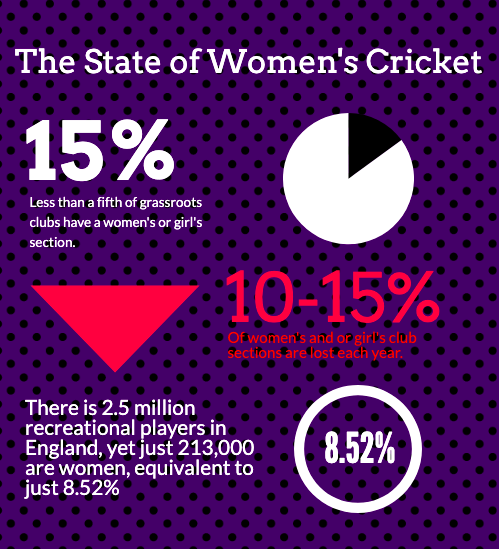
But there are more problems with women’s cricket in England at the minute as increasing travel times and costs, large differences in abilities within leagues and confusion over which format should be taken forward hampering the development of women’s cricket.
The situation is recognised by Keith Brewer, Cricket Development Director at Dorset Cricket, who admits work needs to be done: “We also need to constantly review the formats on offer eg softball/hardball and make sure travel times and accessibility are not an issue”
Brewer does highlight some positives though as the situation is improving in terms of overhauling cricket’s male-only image: “I don't think it is typical any more although there is still work to be done.
“The more we can embed cricket as a gender neutral sport starting with All Stars the less of an issue this will be. There is still work to be done making sure the environment in clubs is appropriate and what women would expect in a modern world.
“Much more needs to be done to embed the women's game in committee and League structures and to give equal importance and prominence in clubs traditionally run by men for men. The momentum needs to be kept up as the churn rate for women is much higher and we could easily reverse the progress made in the last few years.”

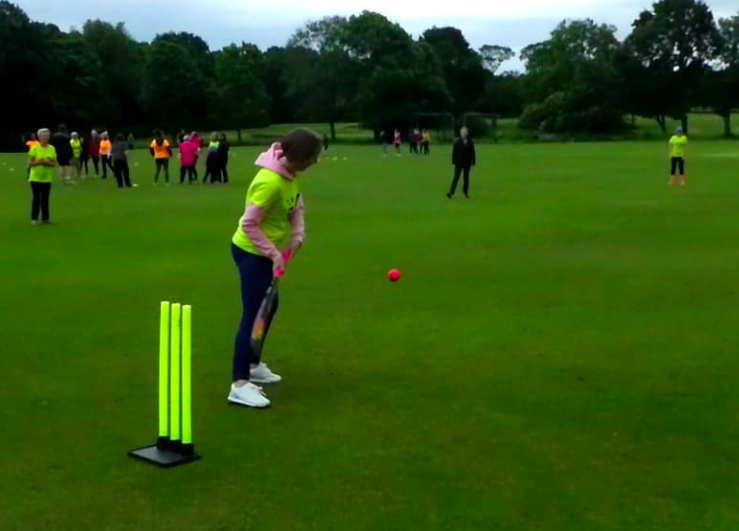
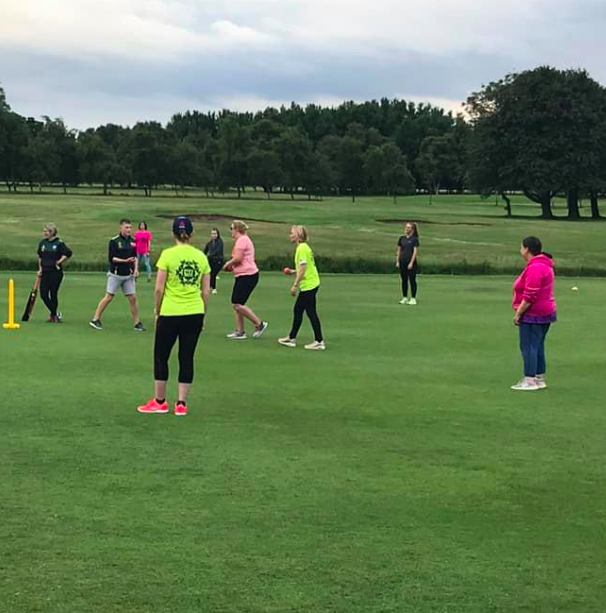
Whilst junior cricket may have the history and bigger set up that women’s cricket that doesn’t mean it is without its issues.
The share of 11-15 year olds playing cricket in England peaked in 2012/13 with 22.5% of that age group playing cricket regularly, that has since dropped to 12.6% in 2017/18 - the last year which has data available.
Cricket charity Chance to Shine suggests a lot of this drop off has to do with getting kids playing cricket in school. Their research shows that among kids who haven’t been exposed to cricket, just 1% of them name cricket as one of their top sports, yet that increases to 66% once they’ve had the chance to play the game.
Adam Sofroniou, communications director of Chance to Shine said: “We know that the most inspiring experience for a child is to actually take part in that sport. You're very unlikely, I think, to want or to be interested in something if you've never actually done it.”
The efforts and Chance to Shine etc have to be supported to ensure there’s a transition from school cricket into a club environment and that is where the All Stars programme should hopefully fill in.
Adam Sofroniou said: “All Stars cricket centres are a way of sort of bridging that gap so that it's in a club environment, but it still feels a little bit more like sessions that they're doing in school.”
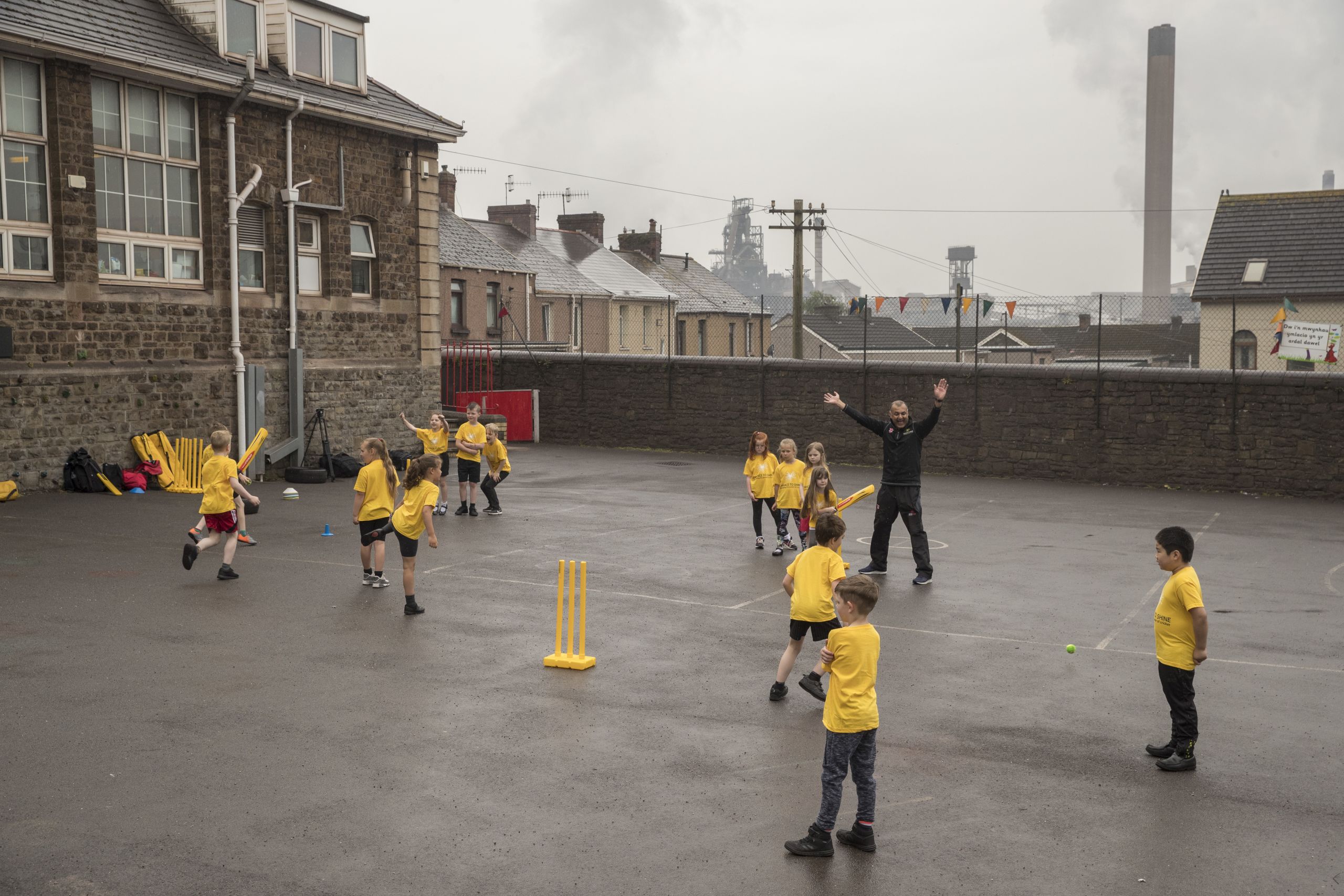
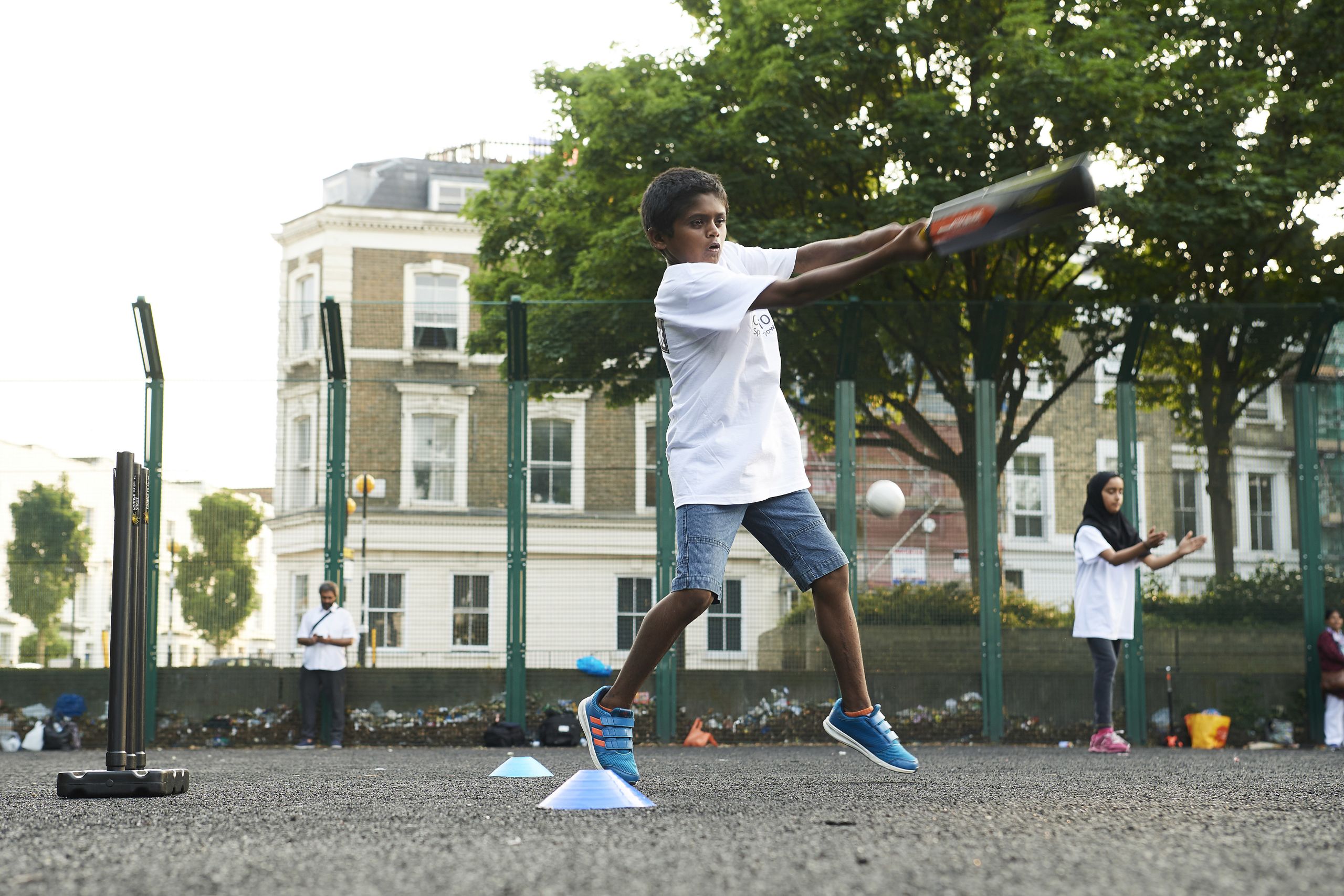

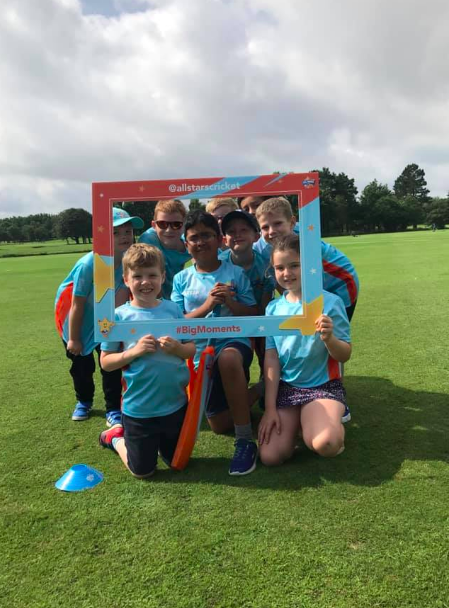

The programme has shown improvements for junior cricket, the share of 5-10 year olds hit a low point in 2015/16 when it reached just 4% although that has now climbed back up to 5.3% in 2017/18 and last year’s numbers are expected to be even better when they’re published.
But the effect it’s had on individual clubs has been even stronger as James Morgan from Backworth Cricket Club said: “All Stars has been a major factor in the growth of the club over the last 4 years. All Stars targets children aged 5-8, which is not an age group that the club has that the club had previous provisions for.
"Therefore, having approximately 50 new boys and girls of that age group is fantastic. It provides the club with a superb foundation for the rest of the club.”
The crucial part now for clubs is to transition that group from the All Stars programme is transferred into teenage cricket where often cricket slides down the list of priorities for many junior cricketers.
James Morgan said: “There is a clear drop off in participation during the teenage years and research suggests a lot of this comes down to exams and studying - teenagers streamline their hobbies to one during teenage years.” These concerns are shared by John Windows, Academy Director at Durham Cricket: “Certainly from 11 down, the numbers are really good, But trying to transfer that early interest into what you would recognise as good quality playing through the age levels and then into the senior teams. I think there's a bit of work to do on that.”
The ECB and local county boards are taking these issues seriously and have made a number of changes in recent times including introducing coloured clothing, U19 T20 cups and potentially moving competitions to miss exam seasons.
Any shortcomings in the junior grassroots system haven't been felt yet at the academy level, and John Windows doesn’t believe they will. He said: “I think as long as kids are playing cricket, they'll still be kids that are proficient at it and still good quality cricket.
“And the academy and the professional club here are always looking for, for that talent to come out on top.”
You can watch the full interview on all things elite, junior cricket with John Windows below.
As a whole the next few years are going to be crucial to developing both junior and women’s cricket and in particular how the ECB implement their Inspiring Generations plan which will see a much needed £67 million invested in facilities, primary school cricket and transforming the female cricket environment.
The investment must be backed with a coherent strategy however. Women’s grassroots cricket needs to be organised into a coherent pyramid allowing clubs of similar abilities and locations to be playing each other regularly and being made to feel welcome within existing club structures.
For junior cricket the focus will need to be on grabbing kids interest when they’re young by getting them playing the sport in schools and allowing them to be able to see it live and from there more will need to be done to make sure they’re still within the sport until they reach adulthood and senior cricket.

